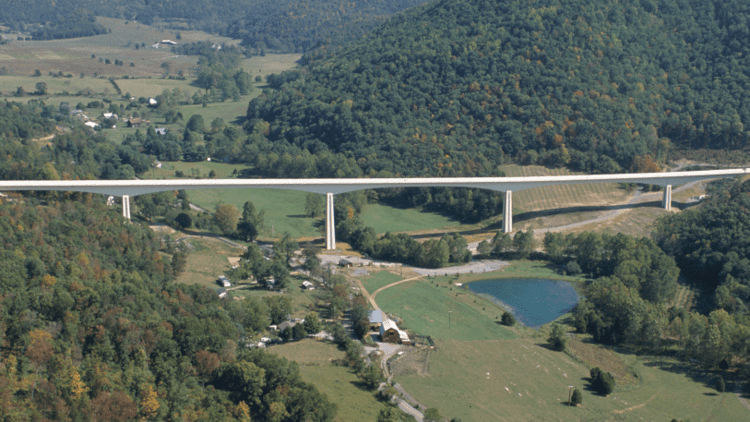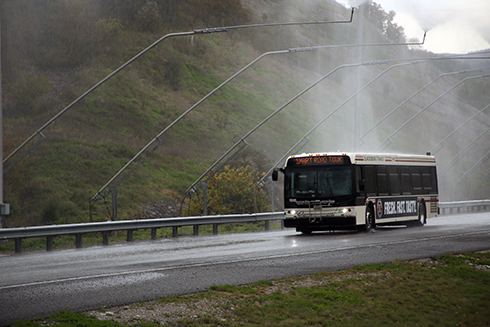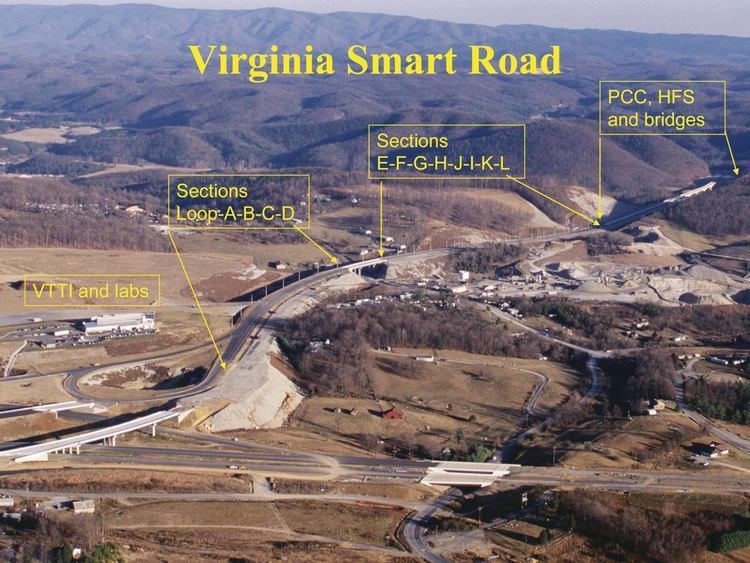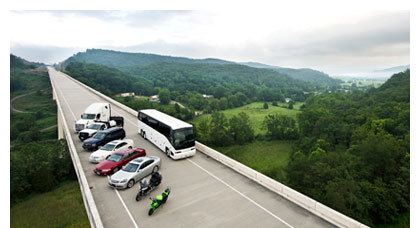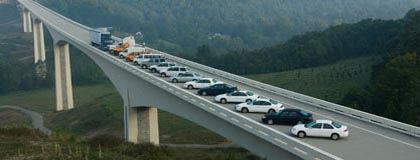Length 3.5 km | ||
 | ||
Existed: March 2000 (phase one) – present West end: Western turnaround loop at Transportation Research Drive County | ||
The Virginia Smart Road, also known as simply the Smart Road or Smart Highway, is a short, limited access road in Montgomery County, Virginia, used for the testing of pavement technologies and as a proving ground for new transportation technologies. The Smart Road is currently a 2.2-mile (3.5 km) stretch of road with turn-around loops at either end. Eventually, the road will be extended to a total of 5.7 miles (9.2 km), which will directly connect U.S. Route 460 in Blacksburg to Interstate 81 with an interchange near mile marker 121; however, there is no set time frame for completion. The Wilson Creek Bridge was built for the Smart Road and, at 175 feet (53 m) tall, is the second tallest bridge in Virginia. The road and bridge are operated and maintained by the Virginia Department of Transportation. It is also part of the Proposed Interstate 73 Corridor.

Features
Smart Road features and operations include, but are not limited to:
